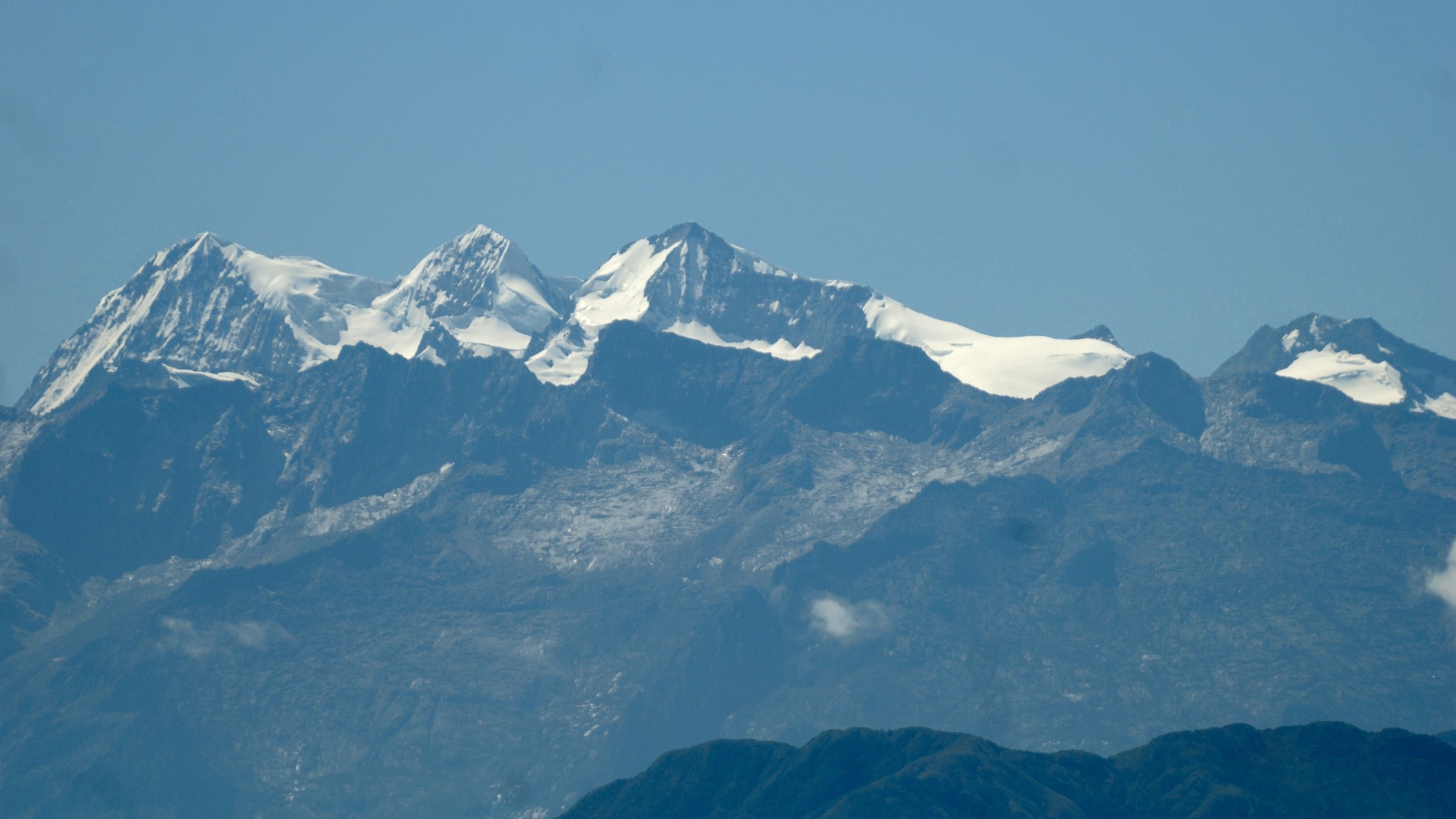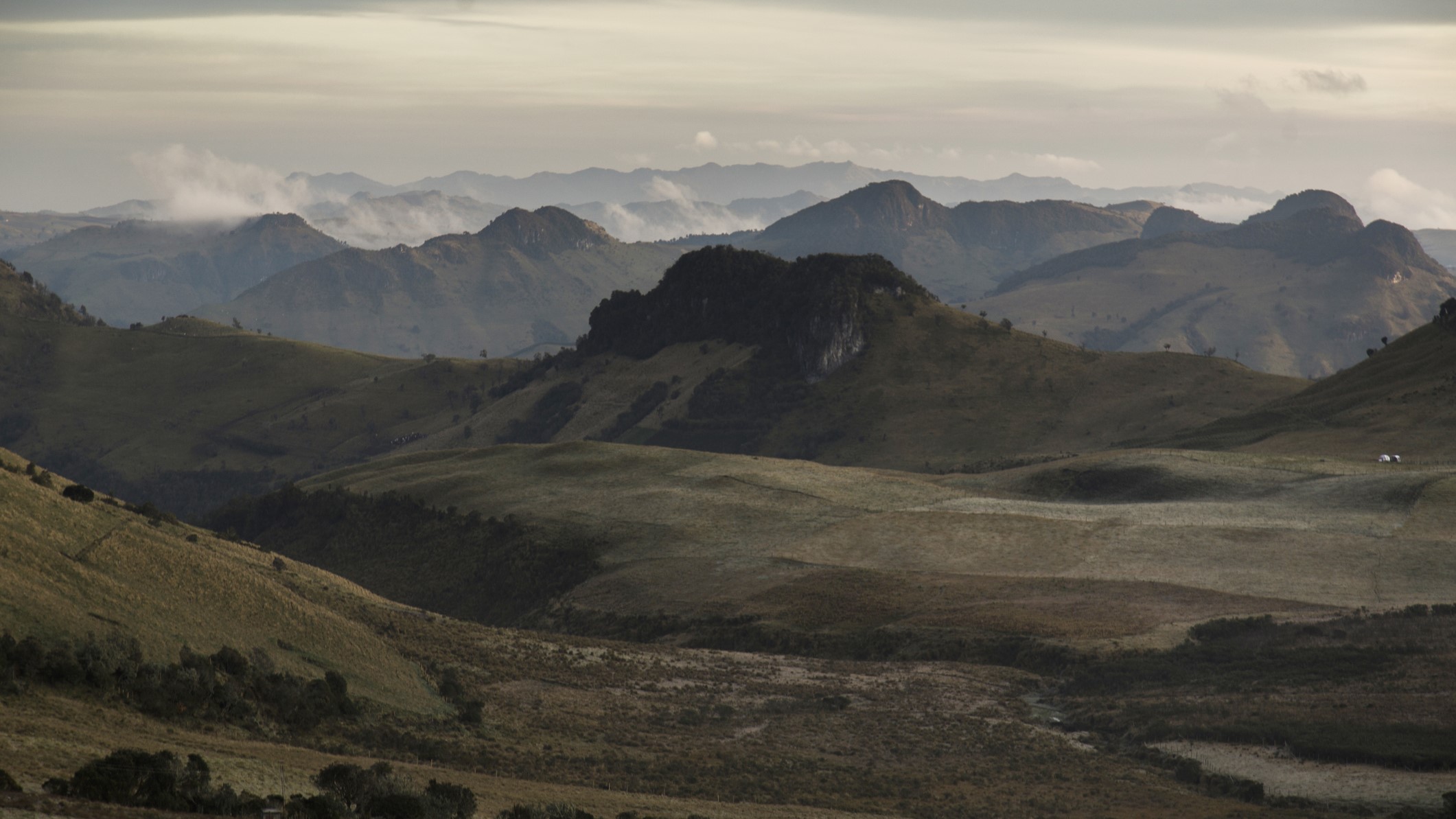'Roots' of Colombian mountains 'dripped' into the mantle millions of years ago — but the peaks still stand tall
Earth's crust once formed a dense "root" supporting Colombia's northern Sierra Nevada de Santa Marta mountains, but new research suggests this prop sank into the mantle millions of years ago.

A Colombian mountain range has lost its "roots" — a wedge of Earth's crust that once propped it up but has since "dripped" down into the mantle, a new study suggests. It's long been a mystery as to how the peaks have managed to stay upright, but now, researchers are investigating the underlying geology.
The Sierra Nevada de Santa Marta, a mountainous region in northwestern Colombia with peaks that stand over 18,700 feet (5,700 meters) tall, has perplexed geologists since the 1970s, when measurements indicated the crust beneath the peaks was unusually thin.
"Mountain regions typically have thick crustal roots that compensate for the load of the mountains," study lead author David Quiroga, a geophysicist and former graduate researcher at the University of Alberta in Canada, told Live Science in an email. Earth's crust is much lighter than the underlying mantle, Quiroga said. Because mountains are so heavy, the crustal roots that sit beneath them are embedded in the mantle. The mass displaced within the mantle is larger than that of the crustal root, and this configuration makes up for the load piled on by mountains that sit above.
Geophysicists can determine the thickness of Earth's crust using gravity anomaly measurements. "In general, there is high gravity in places where there is a lot of mass, and vice-versa," Quiroga said. The presence of a crustal root in mountainous regions usually produces negative gravity anomaly values, meaning the mass in this region is lower than expected. This reflects where the lighter crust has displaced the heavy mantle, unlike other places where the mantle is intact.
"However, in the case of the Sierra Nevada de Santa Marta, in Colombia, there is an elevated mountain region with a high positive gravity anomaly," Quiroga said. "This means that instead of having a mass deficit, there is an excess of mass."
Related: 6 million-year-old 'fossil groundwater pool' discovered deep beneath Sicilian mountains
The mountain range once had a crustal root to make up for its huge load — but this root slowly oozed down into the mantle over a period of 10 million years, according to the study, which was published Jan. 7 in the Journal of Geophysical Research: Solid Earth.
Get the world’s most fascinating discoveries delivered straight to your inbox.
Earth's crust and the uppermost mantle form a rigid shell around our planet known as the lithosphere. The lower lithosphere may "drip" down in places where it is heavier and colder than the mantle below, Quiroga said. The mantle then rises to fill the gaps and heats up the lower crust, which can trigger changes in its composition that cause bigger portions of the crust to sink.
Previous research has suggested lithospheric dripping may explain unusual geological formations and dynamics in other regions — including the Puna Plateau in the Andes, the Sierra Nevada in California and the Wallowa mountains in Oregon. But Quiroga and his colleagues are "the first to propose that such a mechanism is a plausible explanation for the Sierra Nevada de Santa Marta," he said.
It's unclear how the Colombian mountain range has managed to stay upright despite its apparent lack of support, but the devil could be in the details.
"The models in our study show that once the mountain region loses its crustal root it starts sinking due to the loss of support," Quiroga said. "Because the mountain is still upright and tall, this suggests that the removal episode must have occurred very recently and that there has not been enough time for the mountain to collapse."
The peaks may have lost their roots as recently as 2 million years ago, Quiroga said. In the study, the researchers also suggest a possible window for dripping occurred between 56 million and 40 million years ago, during the Eocene epoch This later time frame implies the mountains have remained upright for over 40 million years, which is inconsistent with models in the study that predicted collapse after just 5 million years.
But other factors not included in the models might have propped the mountains up over the ages. The surrounding lithosphere may be strong enough to provide the peaks support from either side, and the mantle may have risen to delay the mountains from crumbling, Quiroga said. The Caribbean tectonic plate, which is sliding beneath Colombia, should also be considered as a potential prop in future models, he added.
Until then, the mystery surrounding the Sierra Nevada de Santa Marta lives on.
Editor's note: This story was updated on Feb. 5 to reflect that previous studies linked lithospheric dripping to unusual surface expressions, not to positive gravity anomalies, as was originally stated.

Sascha is a U.K.-based staff writer at Live Science. She holds a bachelor’s degree in biology from the University of Southampton in England and a master’s degree in science communication from Imperial College London. Her work has appeared in The Guardian and the health website Zoe. Besides writing, she enjoys playing tennis, bread-making and browsing second-hand shops for hidden gems.



